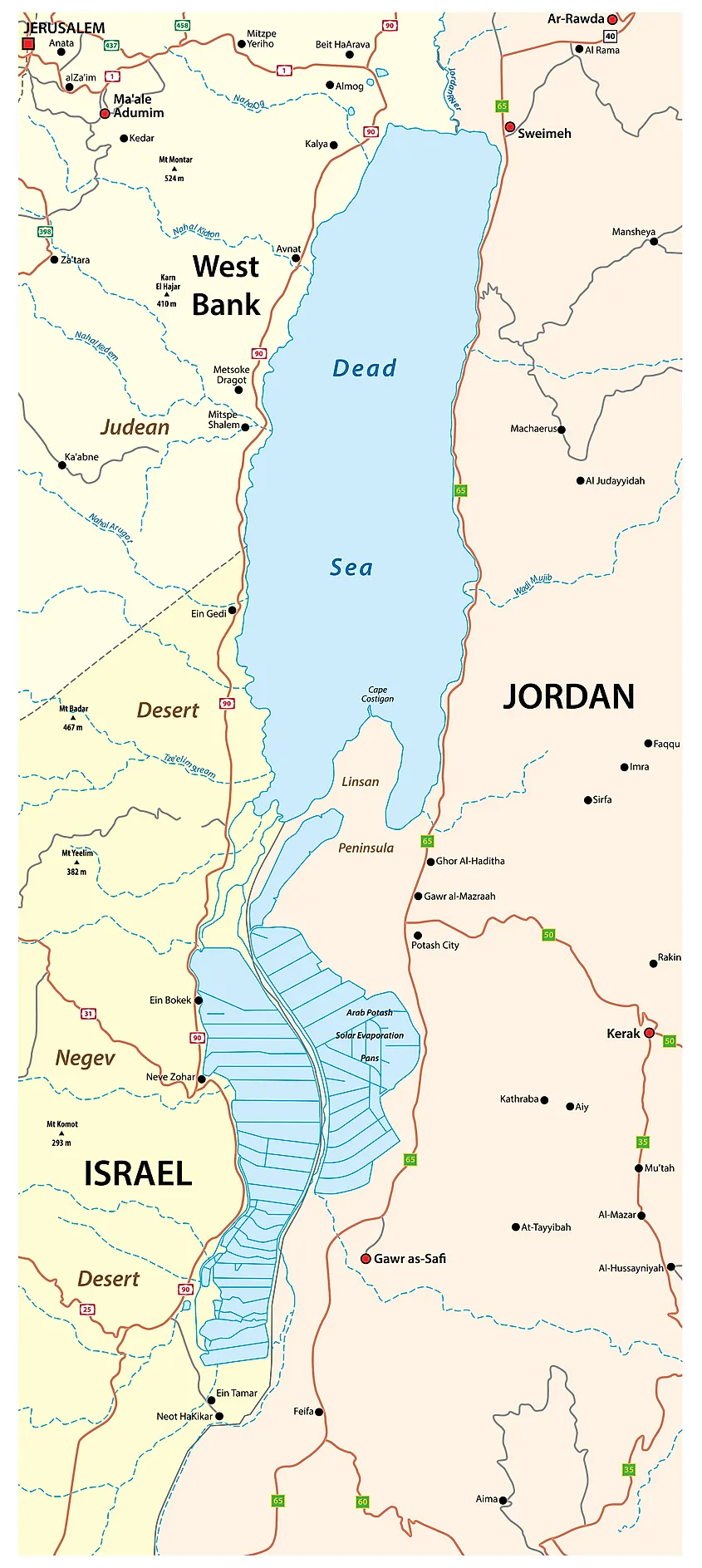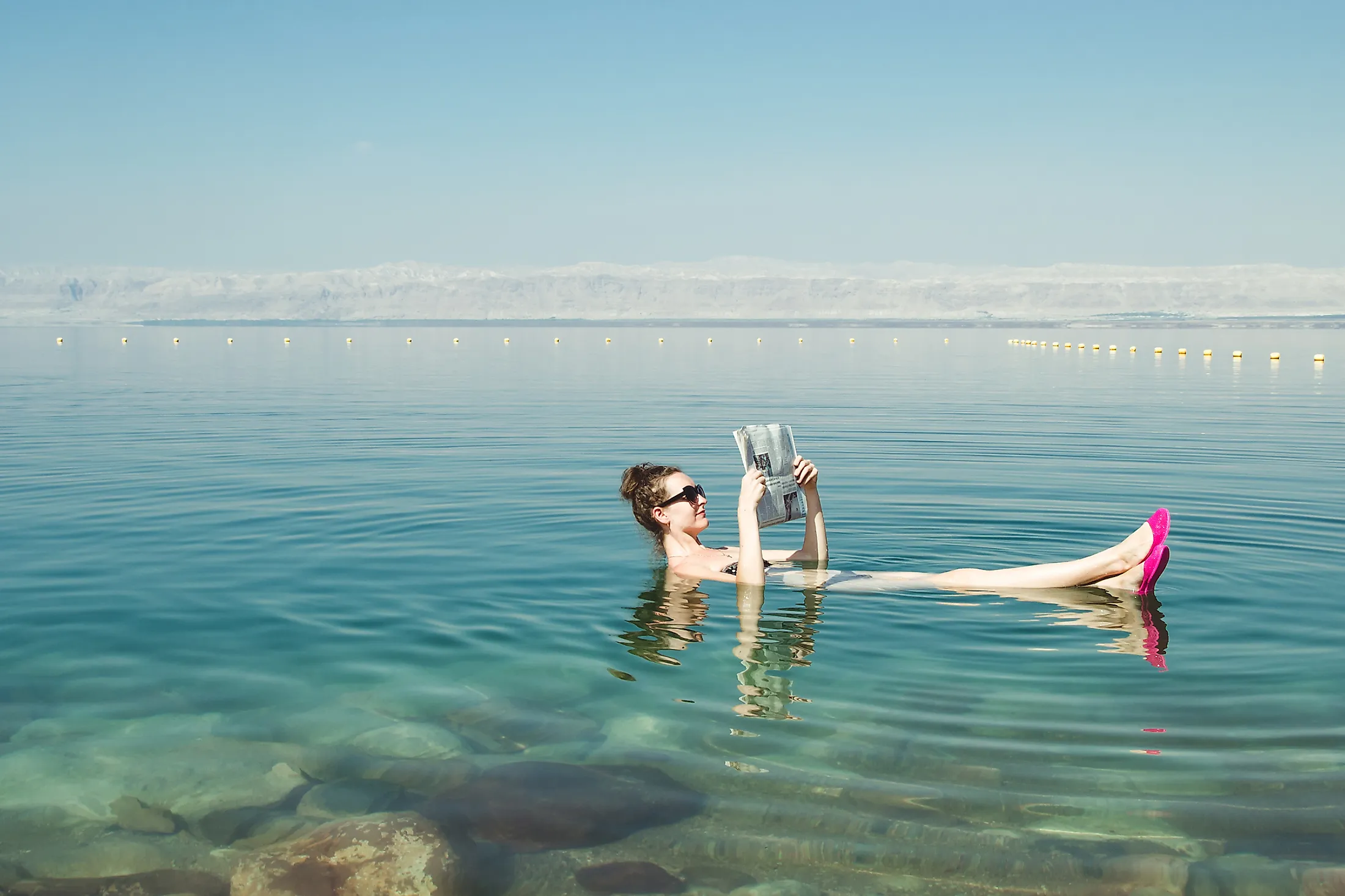
Dead Sea
The Dead Sea, also known as the Salt Sea, is a saline lake in southwestern Asia located between Jordan and Israel. This natural wonder is located at an elevation of 430.5 meters below sea level, making it the Earth’s lowest land-based feature. The Dead Sea is one of the Earth’s saltiest water bodies, almost ten times saltier than ordinary seawaters. The Dead Sea has one main inlet (the Jordan River) but does not have an outlet and so loses its water mainly through evaporation. The high saline level and the harsh climate make the lake devoid of life, except for algae and other microorganisms.
Naming Of The Dead Sea
The Dead Sea features prominently in religious books like the Bible, but with different names. In Hebrew, the lake is called “Yam ha-Melah,” meaning “the Salt Sea.” In some Hebrew prose, the water body is referred to as “Yam ha-Mavet,” meaning “the Sea of Death” because of the lack of aquatic life in the Dead Sea. The Arabic name for the Dead Sea is “al-Bahr al-Mayyit.” The hypersaline lake was named “Dead” because of the high saline level unfavorable for macroscopic organisms like plants and fish.
Location Of The Dead Sea
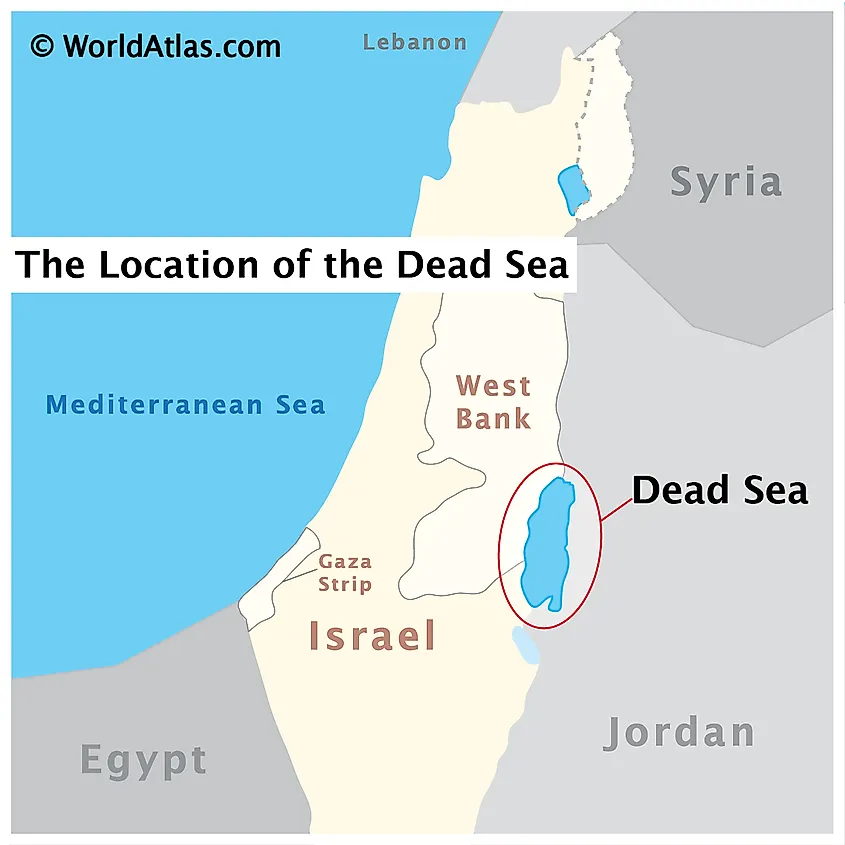
The Dead Sea is a saline lake in southwestern Asia, located on the Jordan-Israel border. Its eastern shore is in Jordan, and the western shore is in Israel. However, the western shore’s southern half belongs to Israel, while the shore’s northern half is in West Bank, an area claimed by both Israel and Palestine. The Dead Sea lies to the east of the Mediterranean Sea and south of the Sea of Galilee. It is located within the Jordan Rift Valley, between Transjordanian plateaus and the hills of Judea. The nearest towns include Jerusalem, Arad, and Tel Aviv.
Geography Of The Dead Sea
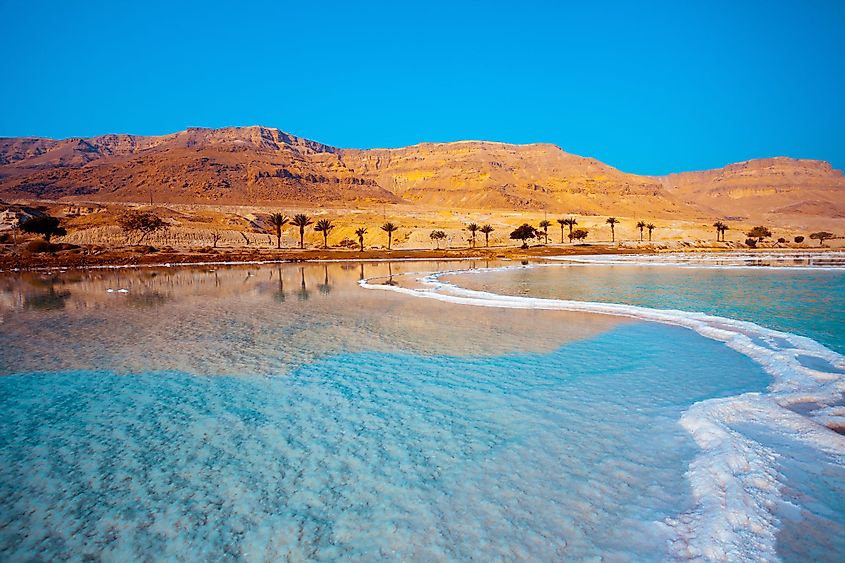
The Dead Sea currently covers approximately 605 square kilometers, receding from 1,050 square kilometers in 1930. The Tongue Peninsula (Al-Lisan) on the eastern shore divides the lake into two unequal basins: the northern basin, which covers three-quarters of the lake’s surface, and the southern basin, which is much smaller, shallower, and highly dyked. Before the recession began, the lake was 80 kilometers long from north to south and 18 kilometers wide from east to west. The northern basin at present has a maximum length of 50 kilometers, while the entire lake is 15 kilometers wide at the widest point. The Dead Sea is 304 meters deep, making it the world’s deepest hypersaline lake, and has a shoreline of about 135 kilometers. It contains 114 cubic kilometers of water.
The Jordan River is the lake’s primary inflow, accounting for much of the lake water. Apart from the Jordan, the Mujib River also contributes a significant amount of water into the lake. Other water sources include Nahal Dragot, Nahal Arugot, Wadi Hasa, and other perennial springs. Rainfall contributes about 100 mm to the northern basin and 50 mm to the southern basin. The Dead Sea does not have an outlet and loses its water mainly through evaporation.
Salinity
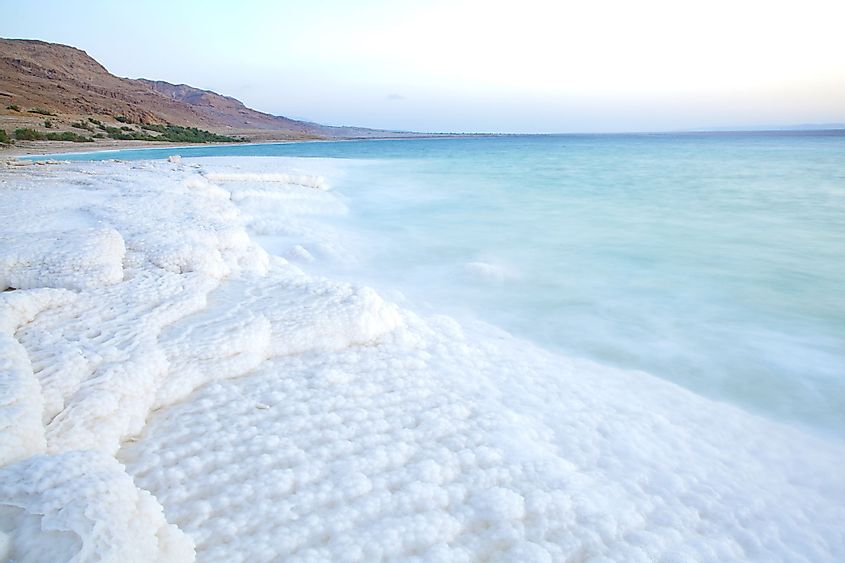
The Dead Sea has extremely saline water, with the salt concentration increasing downwards, creating two different water masses in the lake for some time. The lake has a salinity of 34.2%, making it one of the world’s top ten saltiest water bodies. It is about 9.6 times saltier than seawater and has a water density of 1.24 kg/liter, making it possible for people to float on the surface. However, in the late 19th century and early 20th century, the lake was not as saline as now. In the 19th century, salinity was about 19%.
The two different water masses in the Dead Sea existed until the late 1970s. It became a homogenous water body during the 1978-79 winter when the water on the upper layer cooled and became denser than the lower layer. The two water layers had different water temperatures, salinity, density, and age. From the water surface down to 35 meters, the water temperature varied between 19 and 37 degrees Celsius, and the salinity was about 30%. Beneath the transition zone, the Dead Sea’s lowest level, the saline level was over 34%.
Climate
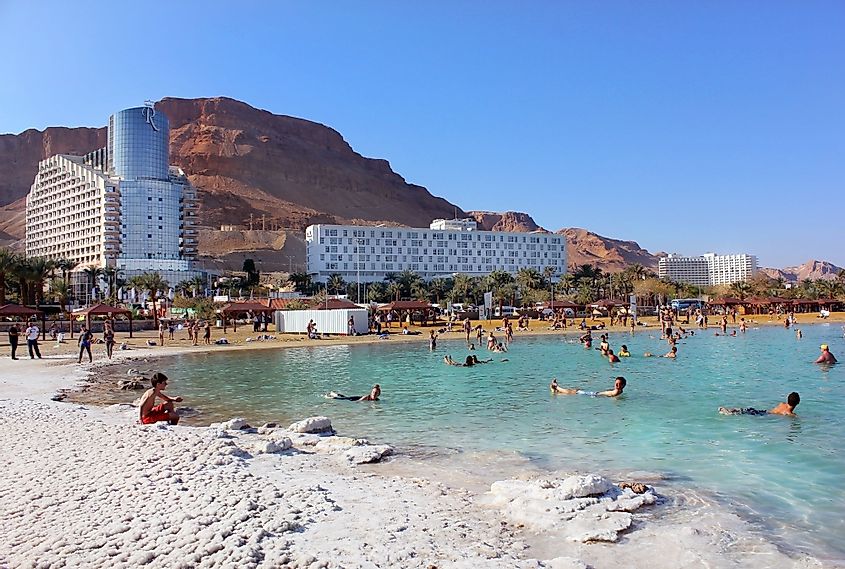
The Dead Sea and the surrounding area experience a hot desert climate, with scanty rainfall and sunny skies all year round. The region receives an average rainfall of 50 mm annually, while the Al-Lisan peninsula receives about 65 mm annual rainfall. The lake receives less rainfall because of its sheltered location and low elevation. The Judea Mountains block the rain-bearing winds from reaching the lake region. During the winter seasons, the temperature averages 20 to 23 degrees Celsius. In summers, the temperature varies between 32 to 39 degrees Celsius. The Dead Sea loses about 1,400 mm of water annually through evaporation. Humidity varies between 45% in May and 62% in October.
Formation Of The Dead Sea
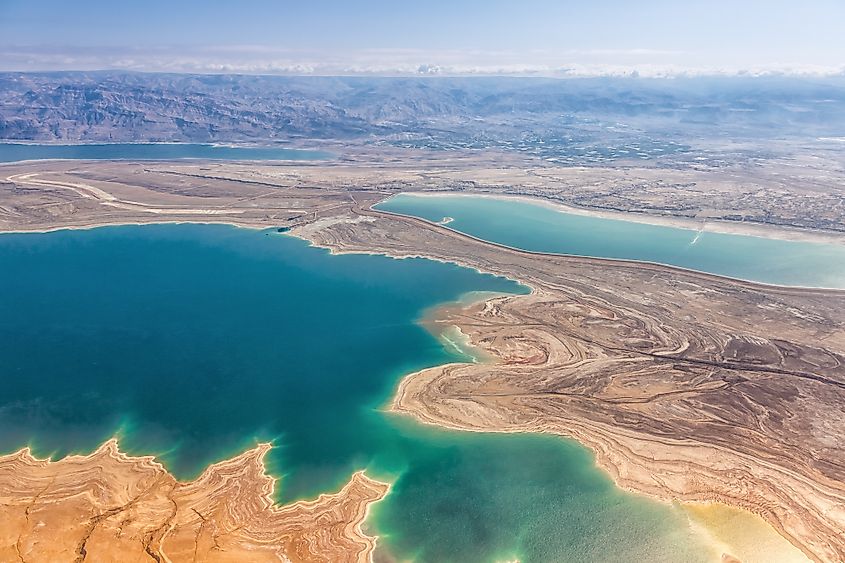
The Dead Sea dates back to about four million years, with its origin explained by two main hypotheses. One hypothesis suggests the lake was formed on the Jordan Rift Valley, a part of the Red Sea Rift. The Red Sea Rift is a mid-ocean ridge that extends from the Dead Sea Transform fault system to the junction with the East African Ridge and the Aden Ridge. The second theory suggests that the lake was formed after the crust created by the step-over discontinuity on the Dead Sea Transform subsided.
During the Cretaceous and Jurassic periods (over 66 million years ago), before the graben occupied by the Dead Sea was created, the Mediterranean Sea flooded the lake region, including Palestine and Syria. However, the land between the Mediterranean Sea and the Rift Valley uplifted such that the seawater could not flood the area again. Thus, the Sedom Lagoon, formed by the flooding Mediterranean Sea, became an enclosed lake, known as Lake Amora. Lake Amora later became Lake Lisan and finally the Dead Sea.
Life In The Dead Sea
Apart from a few microorganisms that have adapted to the hyper-salinity conditions, the Dead Sea is a harsh environment for macroscopic organisms and plants. The lake's salt content drops to about 30% during rainy seasons, allowing more microorganisms to thrive there. Once in a while, the lake’s dark blue water turns red, indicating the presence of Dunaliella (an algae species). The areas surrounding the Dead Sea, especially the mountains, host several animals, including foxes, jackals, hyraxes, hares, and ibex, while the Jordan River valley is an important migration corridor for birds, such as storks, it also contains many water insects, crabs, toads, and marsh frogs.
Human Settlements In The Area
According to the Hebrew Bible, the region around the Dead Sea was inhabited long before the Israelites moved to Canaan. The Bible records several cities on the shores of the lake, including Sodom and Gomorra, Zoar, Zeboim, and Admah. The Dead Sea served as a shipping route for vessels carrying agricultural produce and asphalt during the Greek and Roman period. Today several small settlements are located near the lake, including Israeli, Neve Zohar, and Ein Gedi.
Economic Significance Of The Dead Sea
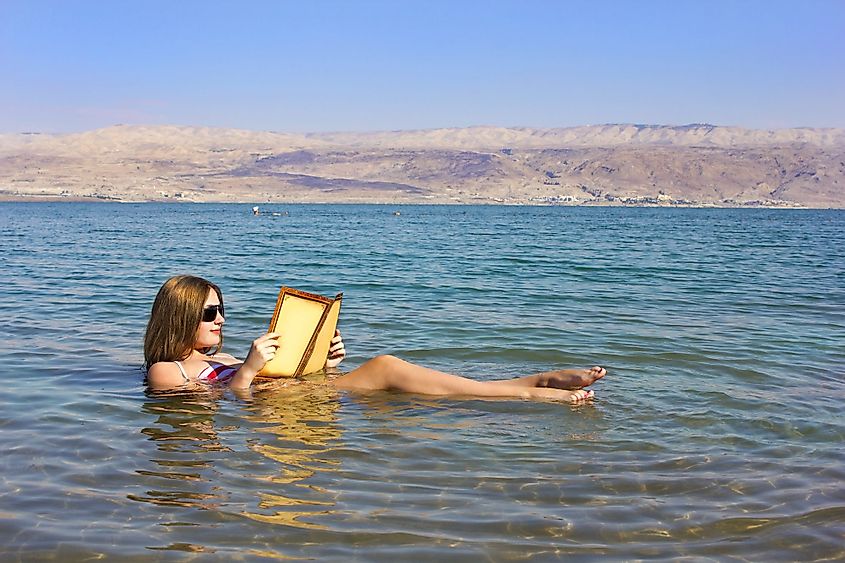
The Dead Sea is a popular destination for tourism and leisure, attracting thousands of visitors every year. One of the popular activities for most tourists is floating on the sea. Because of the high salt concentration, the lake’s water is denser, making floating possible. The water also has healing properties, making the Dead Sea a health resort, especially for people suffering from skin diseases like acne, cellulite, and psoriasis. The Dead Sea also supports the chemical industry by providing minerals like potash, magnesium chloride, and carnallite. Some companies are also planning to manufacture and supply the lake salts to industries making skincare products.
